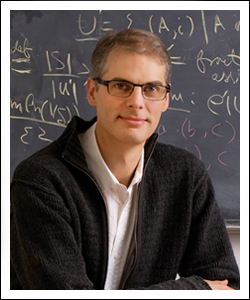 The Science of Deep Specification
The Science of Deep Specification
Presented as part of the 2016 HCSS conference.

ABSTRACT
Abstraction and modularity underlie all successful hardware and software systems: We build complex artifacts by decomposing them into parts that can be understood separately. Modular decomposition depends crucially on the artful choice of interfaces between pieces. As these interfaces become more expressive, we think of them as specications of components or layers. Rich specications based on formal logic are little used in industry today, but a practical platform for working with them would signicantly reduce the costs of system implementation and evolution by identifying vulnerabilities, helping programmers understand the behavior of new components, facilitating rigorous change-impact analysis, and supporting maintainable machine-checked verications that components are correct and t together correctly.
Recently, research in the area has begun to focus on a particularly rich class of specifications, which might be called "deep specications". Deep specifications are
rich (describing complex component behaviors in detail); two-sided (connected to both implementations and clients); formal (written in a mathematical notation with clear semantics to support tools such as type checkers, analysis and testing tools, automated
or machine-assisted provers, and advanced IDEs); and live (connected via machine-checkable proofs to the implementation and client code). These requirements impose strong functional correctness conditions on individual components and permit them to be connected together with rigorous composition theorems.
This talk discusses the key features of deep specifications, surveys recent achievements and ongoing eorts in the research community (in particular, work at Penn, Princeton, Yale, and MIT on formalizing a rich interconnected collection of deep specifications for critical system software components), and argues that the time is ripe for an intensive effort in this area, involving both academia and industry and integrating research, education and community building. The ultimate goal is to provide rigorously checked proofs about much larger artifacts than are feasible today, based on decomposition of proof effort across components with deep specifications.
BIO
 Benjamin Pierce is Henry Salvatori Professor of Computer and Information Science at the University of Pennsylvania and a Fellow of the ACM. His research interests include programming languages, type systems, language-based security, computer-assisted formal verification, differential privacy, and synchronization technologies. He is the author of the widely used graduate textbooks Types and Programming Languages and Software Foundations. He has served as co-Editor in Chief of the Journal of Functional Programming, as Managing Editor for Logical Methods in Computer Science, and as editorial board member of Mathematical Structures in Computer Science, Formal Aspects of Computing, and ACM Transactions on Programming Languages and Systems. He is also the lead designer of the popular Unison file synchronizer.
Benjamin Pierce is Henry Salvatori Professor of Computer and Information Science at the University of Pennsylvania and a Fellow of the ACM. His research interests include programming languages, type systems, language-based security, computer-assisted formal verification, differential privacy, and synchronization technologies. He is the author of the widely used graduate textbooks Types and Programming Languages and Software Foundations. He has served as co-Editor in Chief of the Journal of Functional Programming, as Managing Editor for Logical Methods in Computer Science, and as editorial board member of Mathematical Structures in Computer Science, Formal Aspects of Computing, and ACM Transactions on Programming Languages and Systems. He is also the lead designer of the popular Unison file synchronizer.
 PDF document
PDF document- 2.72 MB
- 29 downloads
- Download
- PDF version
- Printer-friendly version

